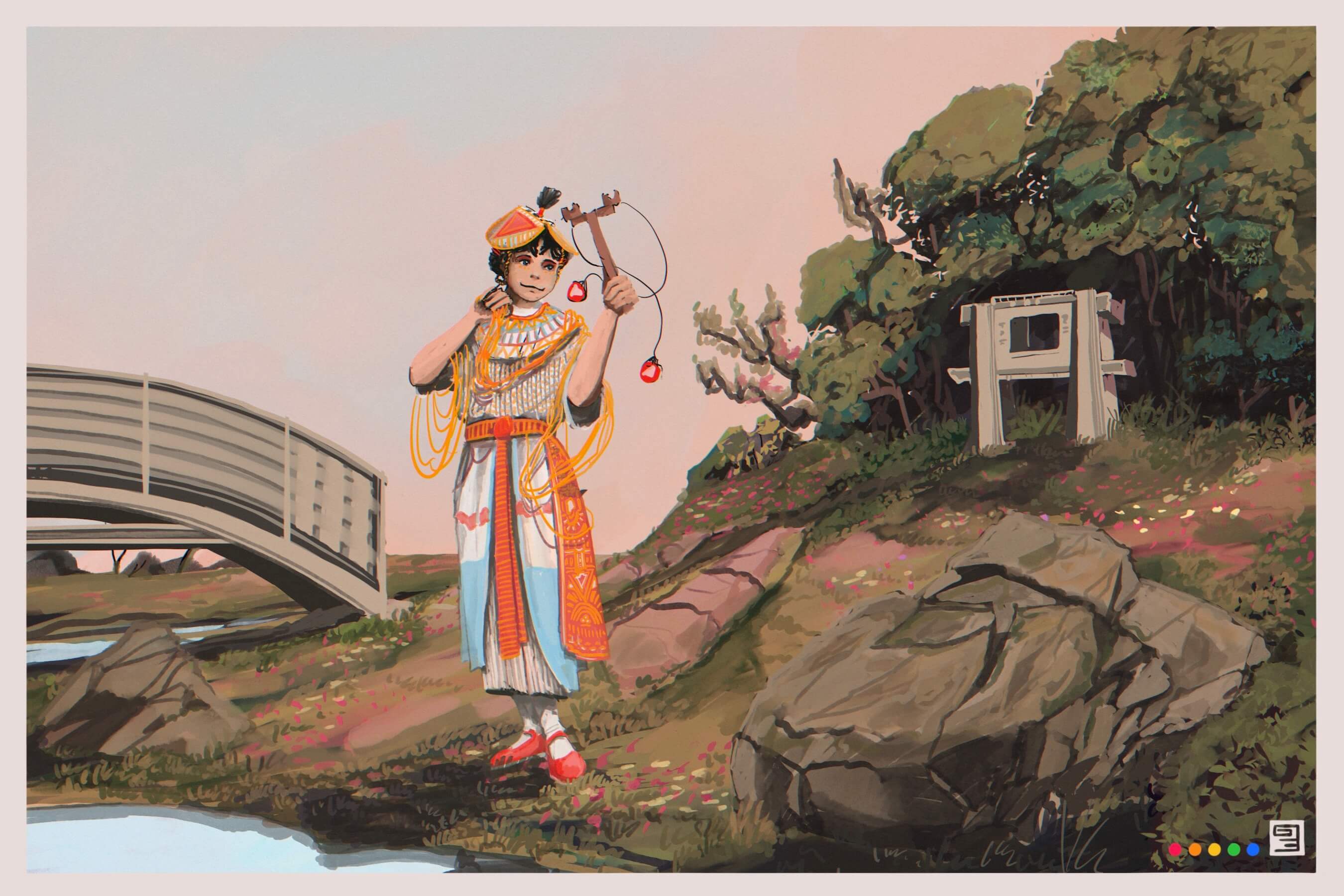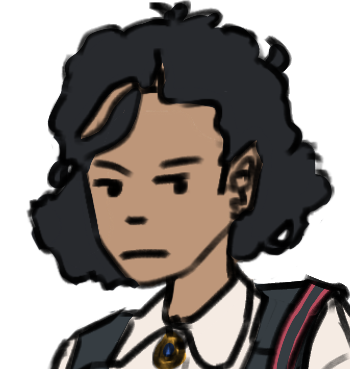NEW Story: Cocktail
Spiritful

This article is not part of Vekllei canon. It may be old, obsolete or just a bit of fun.
There was not much different about one spirit than another. Foreigners mistook Upen, the animism of Vekllei, for environmentalism — that was not the case at all. Landscapes changed, and so did the things that lived in them.
Of course, humans are sentimental creatures, and they become attached to native things. It is important to seperate human desire — the protection of native plants and animals — and the interests of spirits, since they are not the same.
Upen is at the heart of how a Vekllei person understands the world. It describes the basis of all being, and the essence of all things, called seispri, lit. ‘spirits’. Some spirits are large and complex, and can resemble creatures. Others are so small and quiet, no person could ever see them. We’ll look at these later.
Tzipora is wearing traditional ritual dress. Spirits are attracted to interesting things, especially precious metals and fine materials, and so outfits like these are designed to attract their attention. Smart people dress for the occasion, and to talk to spirits you must look like a spirit.
Her hat is called a kitpek, lit. ‘flat hat,’ precisely because you can fold it flat. A wide-brimmed version is still worn in agriculture today. This narrow-brim version is elegant and feminine, and decorated with gold and orange. In summer, shirts stitched with gold like these can be worn. In winter, elaborate capes take their place. You can also see here the earliest form of the gi still in use today, resting to the right of its sister-ornament, the jouvismoakoisnisn belt, with two large tassels. The gi is still worn commonly, and is even part of school uniform. The jouvismoakoisnisn is not so lucky, and today is only associated with Upen ritual.
Her special tool is called a duapolutchi, lit. ‘twin lights,’ which consists of a mounting stick and two hollow wooden balls filled with seeds. You shake it to announce the start of a meeting, or express happiness. For good measure, Tzipora has also slung gold chord around her neck and arms. All in all, a captivating show for most spirits.
In ritual dress, you are supposed to only communicate via Upotenne, which is the physical language of runes. It’s a form of sign language that incorporates the whole body, and is understood by most Vekllei spirits. Tzipora does not know Upotenne very well, so only says a few words before waving her ball-stick around. With any luck, they’ll shower her with blessings — or at the very least, not cause her harm next time she intrudes on them.
